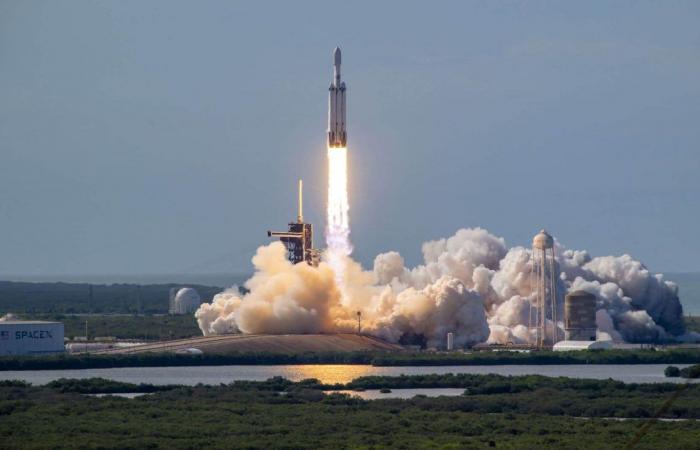A new U.S. satellite that is expected to dramatically improve predictions of solar storms, events that can disrupt power and communications networks on Earth, blasted off from Florida on Tuesday.
The satellite, which weighs nearly 3 tons and is the size of a small school bus, will also make it possible to observe hurricanes and fires on Earth until the 2030s.
A SpaceX Falcon Heavy rocket carrying the precious cargo took off late in the afternoon from Cape Canaveral.
This was the tenth liftoff for the powerful Falcon Heavy, which is expected to release its cargo into space approximately 4.5 hours after launch.
Named GOES-U, the machine is the last in a series of four satellites resulting from a collaboration between NASA and the American Oceanic and Atmospheric Observation Agency (NOAA).
“They are an indispensable tool to protect the United States and the billion people who live and work on the American continent,” NOAA’s Pam Sullivan said at a press conference.
But GOES-U is the first of the four to include a coronagraph called CCOR-1. A coronagraph blocks the Sun’s disk, allowing the solar corona to be observed.
It is from this outer layer that “large solar explosions, called coronal mass ejections, originate, which can project billions of tons of material at millions of km/h towards the Earth,” explained Elsayed Talaat, responsible for space weather observations at NOAA.
This material can then disrupt satellites, energy infrastructure, aviation navigation systems or GPS. Knowing when an ejection occurs allows you to have one to four days to prepare for it.
In early May, a level 5 geomagnetic storm, the maximum level, hit Earth for the first time in two decades, causing impressive northern lights around the world.
Peak solar activity
With the new coronagraph, this event could have been better specified from the start (speed, direction, etc.), according to Elsayed Talaat.
No major disruption was noted, but some farmers were “unable to plant their crops due to a malfunction of the GPS on which their equipment was based”, for example underlined the expert.
This is the first time the United States will be able to observe the solar corona almost continuously, creating the equivalent of an eclipse every 30 minutes.
This is a big improvement over current capabilities: at present, such observations are received with up to eight hours of delay, carried out by a satellite launched in 1995 but which is due to cease operation within two years.
The new instrument will be a “game changer” and “open a new chapter in space weather observations,” according to Elsayed Talaat.
However, these are crucial “to protect our economy, our national and individual security, here on Earth and in space”, according to him. “Although the Sun is no more active than in previous generations, our society has changed and we are more exposed than ever to its mood swings. »
Unlike a coronagraph on Earth, once placed in space the observation time is not limited by clouds in particular.
Goes-U will be positioned in geostationary orbit, approximately 35,000 km above Earth, and will be operational after a few months of testing.
It comes at just the right time, because the Sun is at its peak of activity, a cycle that returns every 11 years.






